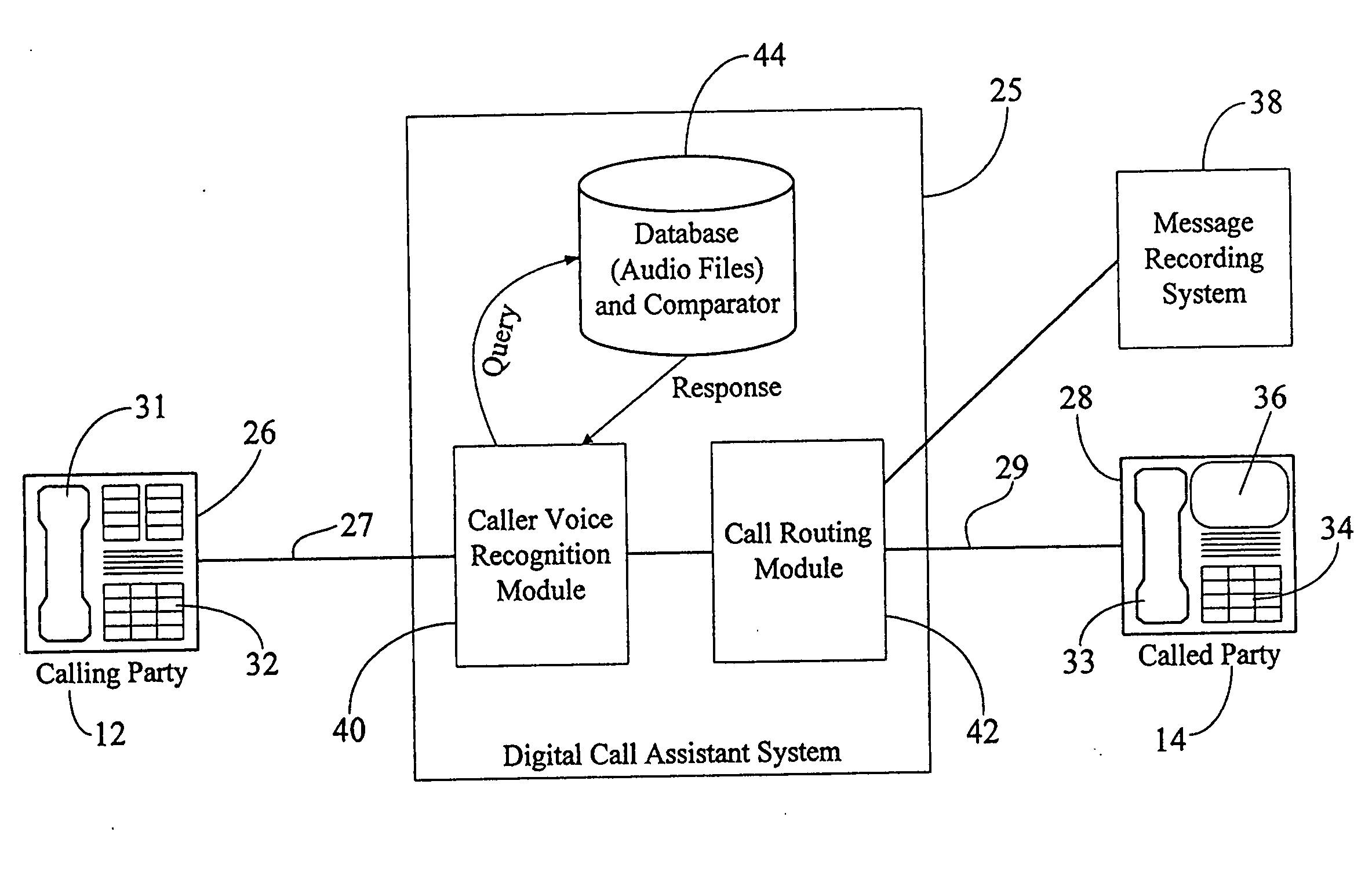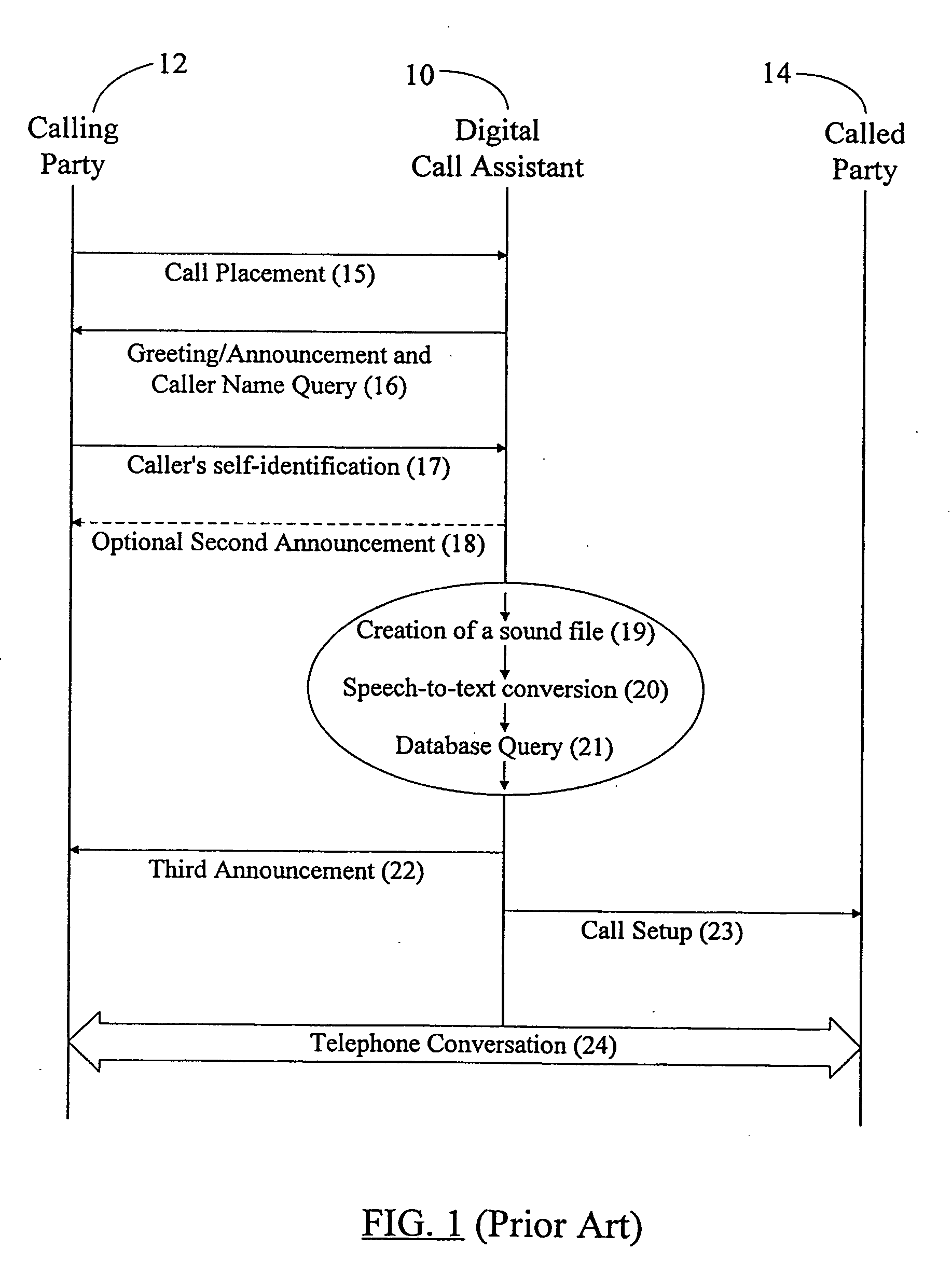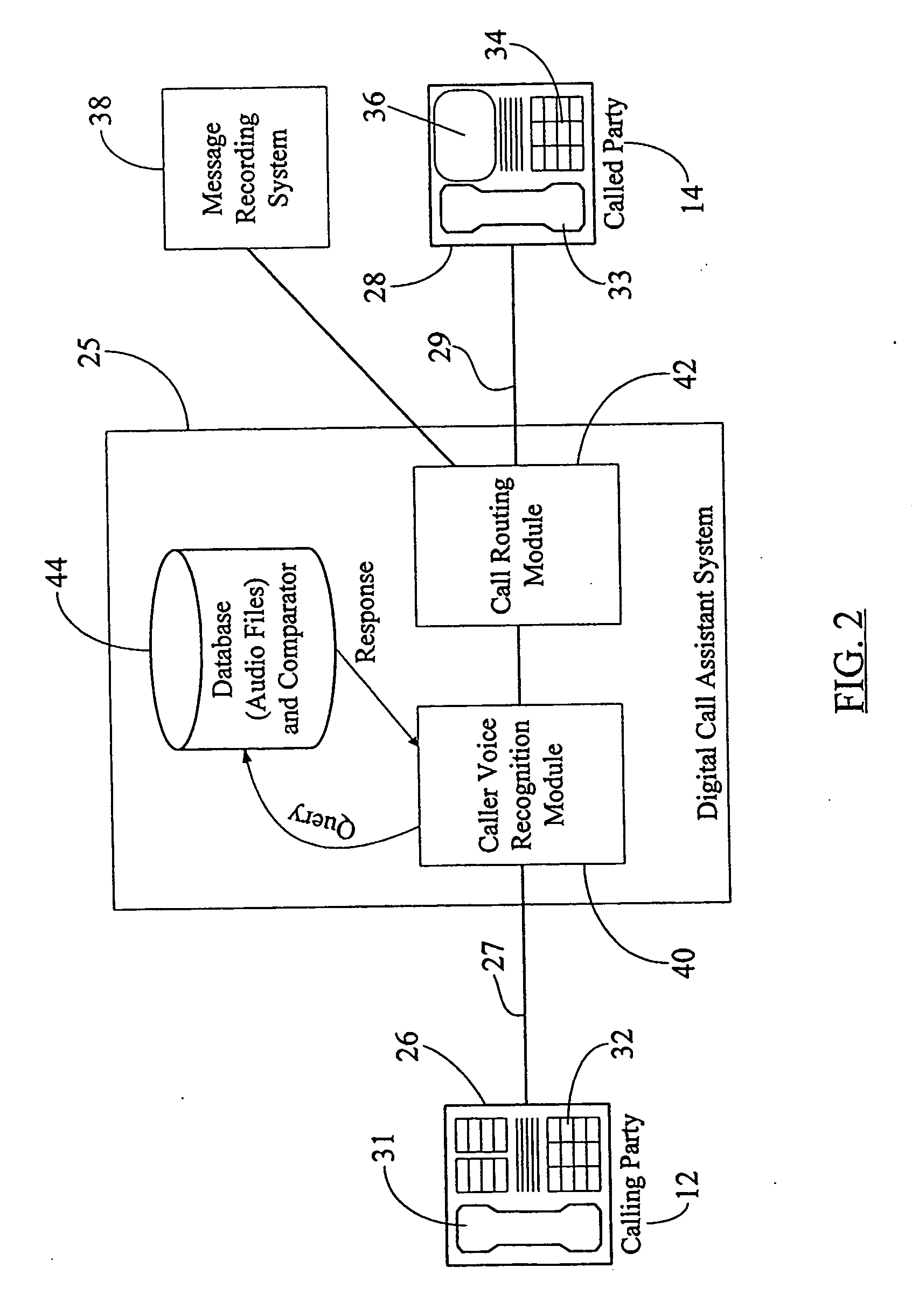Voice recognition for filtering and announcing message
a voice recognition and voice recognition technology, applied in the field of telephone caller identification systems, can solve the problems of difficult, almost impossible, to conceive a world without telephones, advances in telephony have brought with them undesirable consequences, and are perceived by the caller as a major source of disturbance and annoyan
- Summary
- Abstract
- Description
- Claims
- Application Information
AI Technical Summary
Benefits of technology
Problems solved by technology
Method used
Image
Examples
Embodiment Construction
[0027] Referring now to FIG. 2, an exemplary setup is depicted where a digital call assistant system (DCAS) 25 according to the present invention is interfaced between the calling party (or “caller”) 12 and the called party (or “callee”) 14 to screen the caller 12. The calling party telephone 26 is shown connected to the DCAS 25 via a telephone line 27. The callee telephone unit 28 is shown connected to the DCAS 25 via a telephone line 29.
[0028] The caller 12 may place a call and, hence, communicate with the callee 14 (and also with the DCAS 25) by using a handset 31 and a keypad 32 provided on the telephone unit 26. The callee telephone unit 28 may have a handset 33 and a keypad 34 to allow the callee 14 to place an outgoing call or to receive an incoming call. As described hereinbelow, the callee 14 may also notify the DCAS 25, using the keypad 34, about the identity of one or more callers who need be blocked from directly accessing the callee's telephone unit 28. In one embodime...
PUM
 Login to View More
Login to View More Abstract
Description
Claims
Application Information
 Login to View More
Login to View More - R&D
- Intellectual Property
- Life Sciences
- Materials
- Tech Scout
- Unparalleled Data Quality
- Higher Quality Content
- 60% Fewer Hallucinations
Browse by: Latest US Patents, China's latest patents, Technical Efficacy Thesaurus, Application Domain, Technology Topic, Popular Technical Reports.
© 2025 PatSnap. All rights reserved.Legal|Privacy policy|Modern Slavery Act Transparency Statement|Sitemap|About US| Contact US: help@patsnap.com



